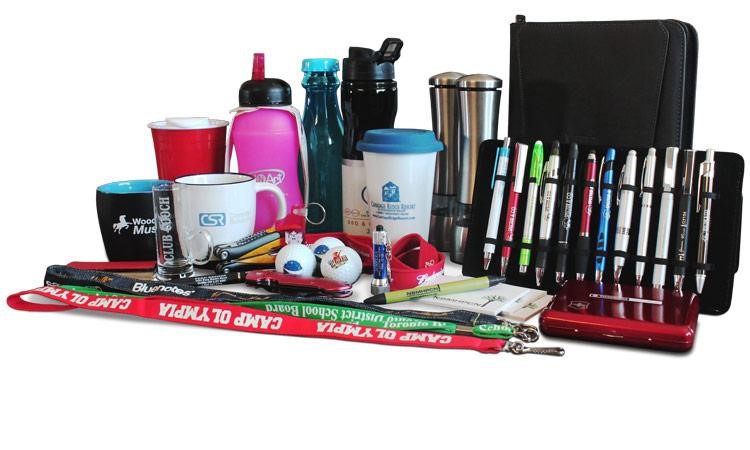In a digital age dominated by social media algorithms, short-form video, and AI-generated content, it’s easy to assume that traditional branding tactics like branded merchandise might have faded into obscurity. However, the opposite is true. In 2025, product-based branding continues to be one of the most effective and enduring strategies for businesses seeking long-term brand recall and tangible customer engagement.
This article explores why physical branded products remain a cornerstone of marketing strategy and how companies can leverage them for meaningful impact in a competitive Australian market.
The Tangibility Advantage
While digital campaigns come and go with the scroll of a thumb, a high-quality branded item like a reusable coffee cup, water bottle or notebook can remain on a customer’s desk—or in their daily routine—for months, if not years. This physical presence creates repeated exposure, fostering deeper familiarity and trust with the brand.
Unlike digital impressions, which can be fleeting or even ignored entirely, branded products physically engage multiple senses. This multi-sensory experience reinforces brand recognition and makes a lasting impression that is difficult to replicate in purely digital formats.
Emotional and Psychological Connections
When people receive a well-made, branded item, it often feels like a gift rather than an advertisement. This taps into reciprocity bias—a psychological principle where people feel compelled to return a favour. In marketing terms, this can manifest as increased customer loyalty, repeat purchases, or word-of-mouth referrals.
Furthermore, items that are useful or emotionally resonant—like eco-friendly tote bags or commemorative apparel—can become associated with positive memories, further deepening emotional connections to a brand.
Demonstrating Brand Values
Consumers in 2025 are increasingly value-driven, seeking alignment between their purchasing decisions and their personal beliefs. Branded merchandise offers companies an opportunity to demonstrate values like sustainability, inclusivity, or innovation through product choices.
For example, an organisation that opts for biodegradable packaging or ethically sourced materials sends a clear message about its commitment to environmental responsibility. These decisions don’t just add value to the item—they add meaning to the brand.
Increased Visibility and Reach
One of the most powerful aspects of product-based branding is the mobile advertising effect. A branded backpack on a commuter train or a water bottle in a gym doesn’t just reach its owner; it reaches everyone in that environment.
In this way, branded products become a kind of walking billboard. But unlike traditional advertising, which can often be intrusive, this form of exposure is subtle, organic, and often perceived as more trustworthy by the public.
ROI and Long-Term Value
Unlike many digital campaigns that require continuous spending to maintain visibility, a single investment in branded merchandise can yield returns over an extended period. Many branded items have longevity that far surpasses a social media post or PPC ad campaign.
Research consistently shows that cost-per-impression (CPI) for promotional merchandise is lower than many traditional or digital forms of advertising. This makes it an attractive option for businesses looking to maximise budget efficiency without sacrificing reach or impact.
Complementing the Digital Landscape
Crucially, product-based branding doesn’t compete with digital—it complements it. Savvy marketers are using branded merchandise to bridge the gap between online and offline experiences.
For example, incorporating QR codes, NFC chips, or augmented reality features into promotional items can lead customers directly to a company’s digital platforms. This enhances user engagement while maintaining the personal touch that physical products provide.
Relevance in a Hybrid World
With the rise of hybrid events and flexible work environments, branded merchandise plays an important role in building connection and cohesion among dispersed teams and audiences. Sending branded welcome packs to remote employees or virtual event attendees fosters a sense of belonging and reinforces company identity.
It also adds a tactile element to otherwise intangible interactions, creating memorable moments that digital interfaces alone often struggle to achieve.
Strategic Selection Matters
Of course, not all branded products are created equal. The key to success lies in choosing items that are high-quality, relevant to your audience, and aligned with your brand identity. This strategic approach ensures the product won’t just be used once and forgotten—it will become a valued part of someone’s daily life.
That’s why many organisations turn to specialists for help with selection and execution. A smart starting point is exploring thoughtfully curated options like Promotional Merchandise from Custom Gear, which offer tailored solutions for maximum brand impact.
An Enduring Branding that Delivers
As marketing channels continue to evolve, the principles of engagement and brand recognition remain timeless. Product-based branding endures because it delivers where it counts: in memory, in emotion, and in value. By combining the physical with the digital and the practical with the personal, companies in 2025 are rediscovering the power of the tangible to build meaningful, lasting connections.

